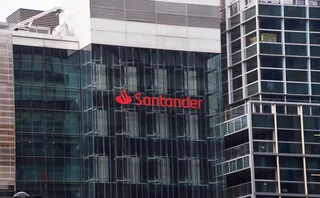
Size-discovery protocols are not on the efficient frontier
Practice improves allocations but more can be done, says Darrell Duffie
Darrell Duffie is the Dean Witter distinguished professor of finance at Stanford University’s Graduate School of Business, and professor by courtesy in the university’s economics department. He has recently been an adviser on financial markets to a range of bodies, including the Financial Stability Board and several Federal Reserve banks.
Most basic economics courses teach that a market only works efficiently when the price is adjusted to match supply and demand. Modern trade platform operators know better.
When the price adjusts to clear the market, as on a central limit order book, large traders are inhibited by their own price impact. They hold back from expressing their full demand or supply. For example, the seller of a large block submits sell orders gradually, given the limited demand available at or near the best bid price. This can lead to costly delays in liquidating or acquiring large positions.
Platform operators have responded to price-impact concerns by adding special trade protocols, collectively known as size discovery.
One of the earliest examples of size discovery is the so-called workup protocol used in the interdealer market for US Treasuries. When a workup session is triggered on BrokerTec, for example, the last trade price is frozen, and central-limit-order-book trading is suspended. Buyers and sellers queue for the opportunity to trade at the frozen workup price.
At the end of the workup session, there is almost inevitably a residual order imbalance on one side of the market. The workup price does not clear the market. But because the workup price is frozen, buyers and sellers face no price impact and are therefore much less concerned about placing block-sized orders. Large inventory imbalances of buyers and sellers can thus quickly be offset, with a potentially large saving in inventory costs.
By shading down the magnitude of their workup orders, market participants have higher inventory costs than they might have with further improvements in market design
Fleming and Nguyen (2015) estimate that workup accounts for 43–56% of total BrokerTec trade volume in on-the-run Treasuries.
Workup and other size-discovery mechanisms, including matching sessions and dark pools, are popular in a wide range of other markets.
For example, on GFI’s platform for trading credit default swaps, Collin-Dufresne, Junge, and Trolle (2016) find that matching sessions and workups account for over 70% of trades in popular credit default swap (CDS) index products such as CDX.NA.IG.5YR – a composite of five-year CDSs referencing 125 investment-grade firms. Trade platforms for interest rate swaps also make heavy use of workup or matching sessions. Size discovery also shows up in equity markets, in the form of block-crossing dark pools such as Liquidnet and Posit.
My research with Haoxiang Zhu of the Massachusetts Institute of Technology shows that augmenting a price-discovery trading protocol, such as a central limit order book or double-auction market, with size discovery leads to a substantial improvement in market efficiency. But we also find that there are further, untapped potential efficiency gains.
Winners’ curse
Workup is far from perfect because it introduces a new form of the so-called winner’s curse. For example, Maureen wishes to liquidate $500 million of on-the-run 10-year Treasuries. She is considering how much of the block to submit into workup. She thinks that workup could absorb about half of her block, but she is uncertain about the total workup demand.
Suppose she submits the entire block into workup at the frozen price of 100, and is then surprised to find the entire block is taken by workup buyers. Maureen would then have seller’s remorse. Conditioning on the event of enough workup demand to take her entire position, she would move up her expectation of the price that she could have received for some of her block in the subsequent limit-order-book market.
In some cases, she will find that her optimal execution strategy is to submit less than the entire block into workup, holding back the remainder for the limit-order-book market – despite the lack of price impact in workup. While this works for Maureen, it is not generally optimal from the viewpoint of market efficiency. By shading down the magnitude of their workup orders, market participants have higher inventory costs than they might have with further improvements in market design.
Big dealer banks, now under heavier regulatory capital requirements, are no longer happy to accommodate large block-trade interests. Space on their balance sheets has become more expensive to their shareholders, and thus to their clients.
While size discovery has significantly improved allocative efficiency in markets with large block-trade demands and limited liquidity, there is plenty of room for further innovation in market design.
Only users who have a paid subscription or are part of a corporate subscription are able to print or copy content.
To access these options, along with all other subscription benefits, please contact info@risk.net or view our subscription options here: http://subscriptions.risk.net/subscribe
You are currently unable to print this content. Please contact info@risk.net to find out more.
You are currently unable to copy this content. Please contact info@risk.net to find out more.
Copyright Infopro Digital Limited. All rights reserved.
As outlined in our terms and conditions, https://www.infopro-digital.com/terms-and-conditions/subscriptions/ (point 2.4), printing is limited to a single copy.
If you would like to purchase additional rights please email info@risk.net
Copyright Infopro Digital Limited. All rights reserved.
You may share this content using our article tools. As outlined in our terms and conditions, https://www.infopro-digital.com/terms-and-conditions/subscriptions/ (clause 2.4), an Authorised User may only make one copy of the materials for their own personal use. You must also comply with the restrictions in clause 2.5.
If you would like to purchase additional rights please email info@risk.net
More on Comment
Op risk data: Santander in car crash of motor-finance fail
Also: Macquarie fined for fake metals trade flaws, Metro makes AML misses, and Invesco red-faced over greenwashing. Data by ORX News
‘It’s not EU’: Do government bond spreads spell eurozone break-up?
Divergence between EGB yields is in the EU’s make-up; only a shared risk architecture can reunite them
Why there is no fence in effective regulatory relationships
A chief risk officer and former bank supervisor says regulators and regulated are on the same side
An AI-first approach to model risk management
Firms must define their AI risk appetite before trying to manage or model it, says Christophe Rougeaux
Op risk data: At Trafigura, a $1 billion miss in Mongolia
Also: Insurance cartels, Santander settlement and TSB’s “woeful” customer treatment. Data by ORX News
UST repo clearing: considerations for ‘done-away’ implementation
Citi’s Mariam Rafi sets out the drivers for sponsored and agent clearing of Treasury repo and reverse repo
Op risk data: Macquarie mauled by securities mismarks
Also: Danske’s costliest branch, tedious times for TD, and WhatsApp won’t stop. Data by ORX News
Climate stress tests are cold comfort for banks
Flaws in regulators’ methodology for gauging financial impact of climate change undermine transition efforts, argues modelling expert








